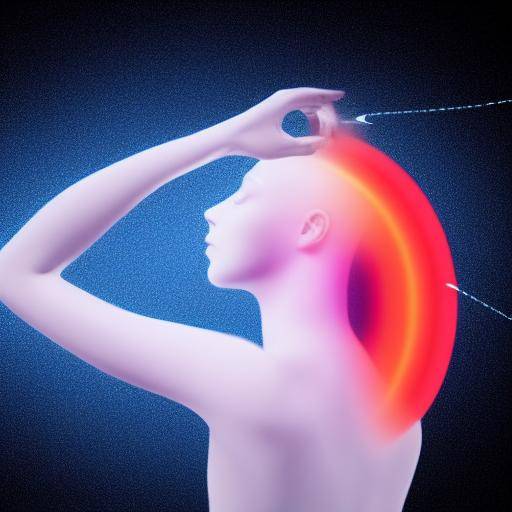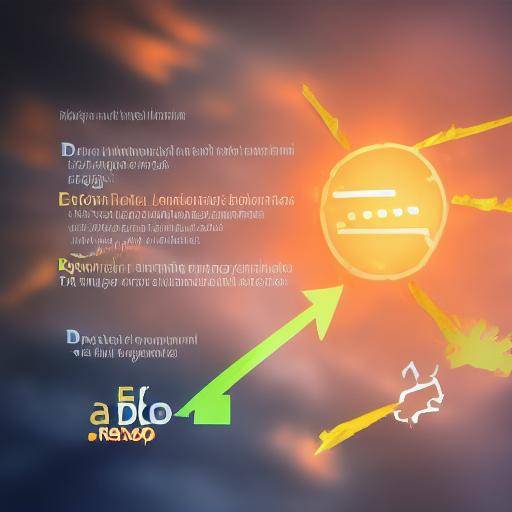
Stress is a common part of modern life, and can often lead to professional exhaustion, also known as burnout. However, there are effective tools to manage stress and prevent it from becoming more serious. One of these tools is mindfulness, a practice that can help cultivate calm and mental clarity in the midst of stressful situations. In this article, we will explore in detail what mindfulness is, how it can be used to handle stress and avoid burnout, and provide practical advice to incorporate this technique into your daily life.
Introduction
In today's society, stress is an omnipresent reality. Labour, personal and social demands can often exceed our ability to handle them, resulting in high levels of stress and, in extreme cases, burnout. However, mindfulness has become an increasingly popular technique to address these issues. In this article, we will immerse ourselves in the concept of mindfulness, explore how it can help manage stress and prevent burnout, and provide practical advice for its implementation.
History and Background
The practice of mindfulness has deep roots in the ancient Buddhist tradition, where it is known as "sati", which means full attention. Over the centuries, it has been transmitted from generation to generation and has become adopted by various cultures and traditions around the world. However, its current popularity has been driven by renewed interest in its practical application to improve mental and emotional health.
Among the important milestones in the history of mindfulness is his introduction in the West by Jon Kabat-Zinn in the 1970s. Kabat-Zinn developed the mindfulness-based stress reduction program (MBSR) at the University of Massachusetts Medical School. This initiative marked a turning point in mindfulness acceptance in clinical and therapeutic environments.
Analysis in Deep
Mindfulness has gained recognition in the scientific community for its ability to reduce stress, improve concentration and promote emotional well-being. Studies have shown that regular mindfulness practice can have positive effects on mental health, including reducing anxiety, depression and emotional exhaustion.
However, the path of mindfulness is not without challenges. Practice requires commitment, patience and persistence to develop the ability to be present at the present time, without being carried away by anxious thoughts about the future or remorse over the past. In addition, incorporating mindfulness into working environments can find resistance due to misperceptions about its compatibility with productivity and performance.
Comprehensive review
Mindfulness can be applied in multiple areas of life, from the working context to personal relationships. Its positive impact on stress reduction and promotion of emotional well-being makes it a valuable tool for burnout prevention. By integrating mindfulness into the daily routine, it is possible to develop greater capacity to deal with stress and promote a sustainable balance between work and personal life.
In addition, mindfulness is not a static practice; there are multiple approaches and techniques that can adapt to individual needs. Whether through meditation, breathing exercises, or full attention in everyday activities, mindfulness offers flexibility for incorporation in various contexts.
Comparative analysis
By comparing the concept of mindfulness with stress problems and burnout, your ability to address the roots of emotional distress and excessive labor demands is revealed. While stress and burnout pose an ongoing emotional and physical burden, mindfulness proposes a proactive approach to cultivating emotional resilience and self-management.
Mindfulness is distinguished by its approach at the present moment and full consciousness, while stress and burnout are often associated with excessive concern for the future or exhaustion derived from an overwhelming workload. However, it is important to note that mindfulness does not intend to completely eliminate stress, but to change the relationship with it, allowing a more balanced and less harmful experience.
Practical Tips and Accessible Tips
Incorporating mindfulness into everyday life may seem overwhelming at first, but there are various ways of integrating this practice gradually and effectively. Here are some practical tips to incorporate mindfulness into your daily routine:
- Daily meditation: Dedicate a few minutes each day to meditation, focusing on your breathing or an object of attention.
- Full attention in daily activities: Be fully aware of your daily activities, such as eating, walking or working, focusing on every action and feeling.
- Conscious breathing: Practice conscious breathing exercises to recover calm in times of stress.
- Yoga practice: Incorporates yoga practice, which combines full attention with conscious movement.
- Conscious pause: Take small breaks throughout the day to connect with the present moment and reconnect with your inner state.
When implementing these practices, it is important to remember that mindfulness is a skill that develops with constant time and practice. Patience and self-pity play a crucial role in this process.
Industry Visions and Reviews
Expert opinions in the field of mindfulness, stress management and burnout prevention provide a valuable insight into the application and benefits of these practices. The scientific and business community has increasingly recognized the relevance of mindfulness in promoting well-being, working efficiency and mitigating emotional exhaustion.
Experts emphasize that mindfulness not only benefits individuals in the personal, but also has a positive impact on the working environment. Improved ability to manage stress and promote mental clarity can result in increased productivity, creativity and satisfaction at work, which in turn can contribute to the prevention of burnout at the organizational level.
Case Studies and Real Life Applications
Various case studies and examples of mindfulness applications in work and personal environments illustrate how this practice can have a significant impact on stress management and burnout prevention. Progressive organizations are implementing mindfulness programs and full attention with positive results in the mental and emotional health of their employees, as well as in organizational culture in general.
Future Trends and Predictions
The future of mindfulness, stress management and burnout prevention promises significant innovations and evolutions. As awareness of the importance of emotional well-being increases, new applications and mindfulness approaches are likely to emerge adapted to specific contexts, such as education, health care and the working environment.
In terms of burnout prevention, more and more organizations are expected to recognize the need to implement strategies based on mindfulness and stress management as an integral part of their business culture.
Conclusions
Mindfulness represents a powerful tool to manage stress and prevent burnout. By cultivating full attention at the present time, you can develop greater emotional resilience and mental clarity that are fundamental to facing the challenges of modern life.
At the end of the day, mindfulness does not seek to eliminate stress completely, but to transform our relationship with it, allowing us to navigate through the turbulent waters of life with greater serenity and balance.
FAQs
What is mindfulness?
The mindfulness, also known as full attention, is the practice of paying deliberate attention to the present moment with an attitude of openness, curiosity and acceptance.
How can mindfulness help manage stress?
Mindfulness can help manage stress by building the capacity to be present at the present time, which in turn promotes greater mental clarity and emotional resilience.
What are the benefits of mindfulness in the prevention of burnout?
Mindfulness can help prevent burnout by reducing emotional burden and promoting greater self-management of stress responses, which in turn can improve resilience and emotional well-being.
What is the difference between stress and burnout?
Although stress and burnout share similar symptoms, burnout is a more advanced state of emotional and mental exhaustion, often associated with work exhaustion and a decrease in the ability to deal with job demands.
Is mindfulness right for everyone?
Mindfulness is a practice that can benefit most people, but it is important to adapt its implementation to individual needs and seek professional guidance if necessary.
What is the best way to start practicing mindfulness?
An effective way to start practicing mindfulness is through guided meditation, either through applications, classes or online resources, to acquire a basic understanding of practice.
How can mindfulness be integrated into the working environment?
Mindfulness can be integrated into the working environment through well-being programs, training sessions and practices that promote full awareness and stress management among employees.
With the implementation of these practices and the understanding of their benefits, it is possible to proactively address stress and promote greater emotional and mental well-being both at the personal and working levels. Mindfulness is not only a tool for managing stress, but a transformative approach to addressing everyday challenges with greater tranquility and clarity.
In the end, the path of mindfulness offers a means to cultivate calm in the midst of chaos, promoting a sustainable balance and a greater connection with our inner being.






















































